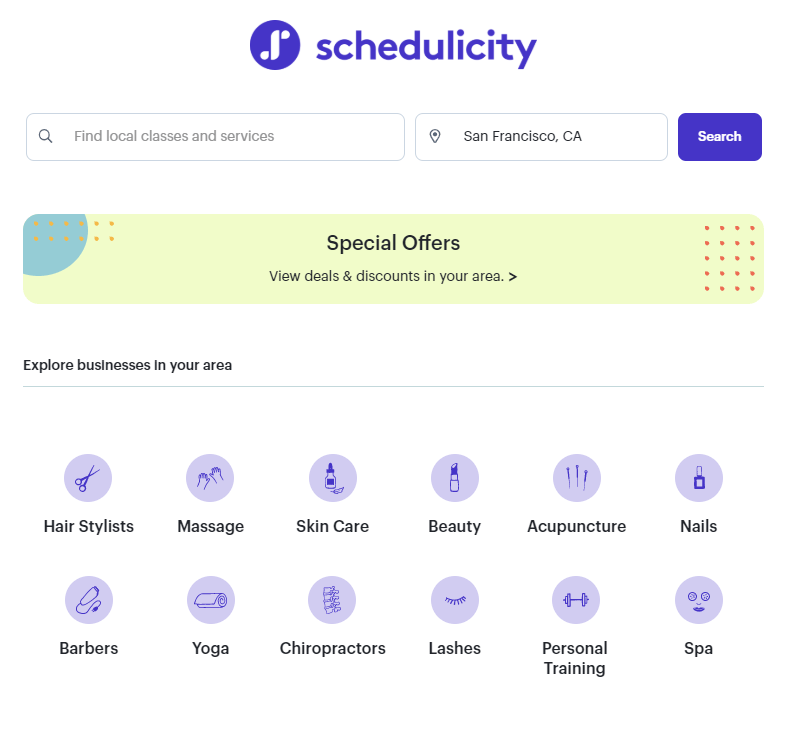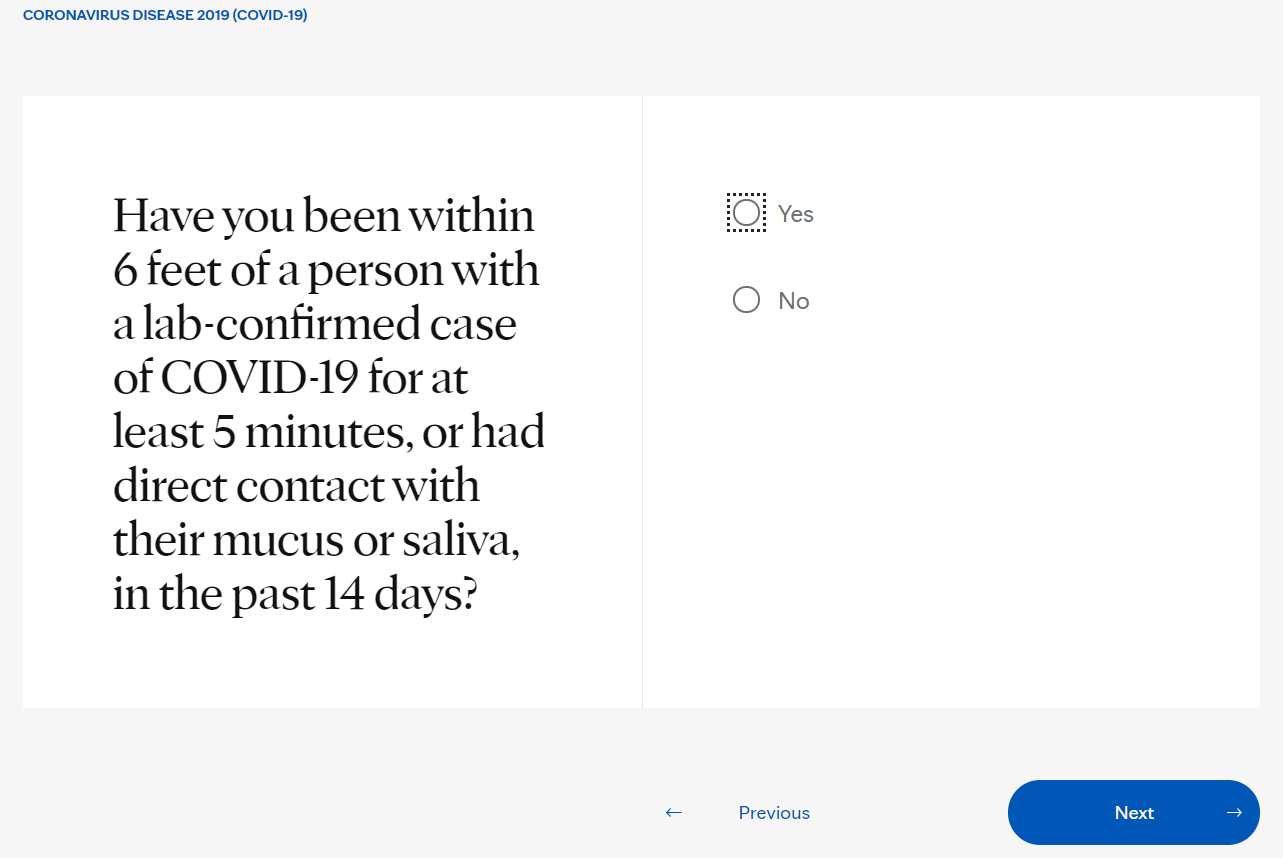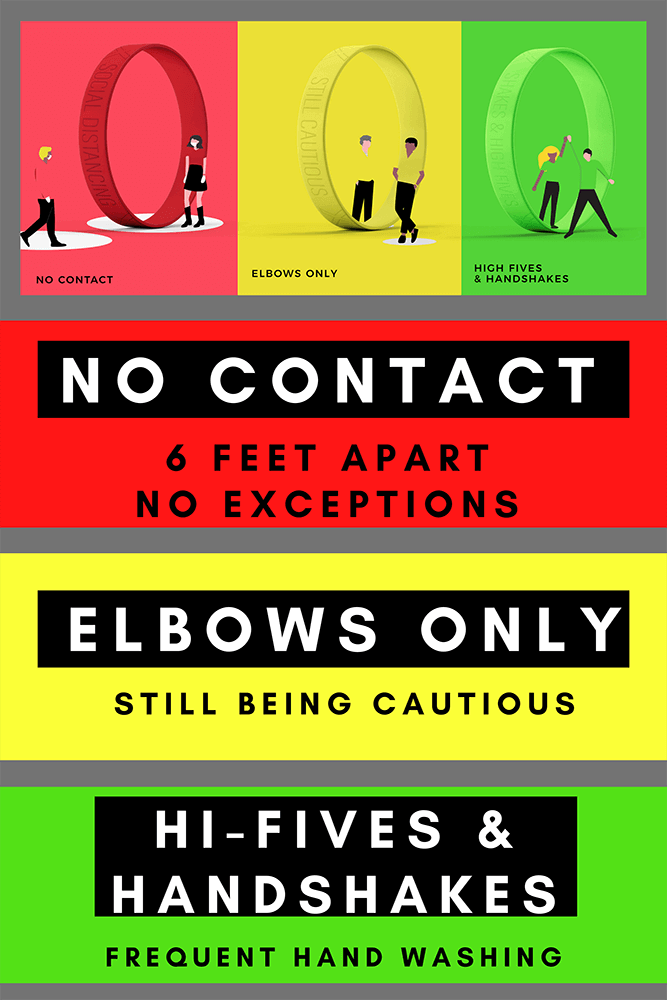When Coronavirus hit the world with a deafening crash just a few short months ago, studio owners were faced with a tough decision.
Many opted to shut their yoga studio down and pivot to virtual classes in order to survive the pandemic financially.
And now that many states have given the green light to open businesses back up, studio owners are left to decide how to do that in a post-pandemic era.
From face coverings and physical distancing, the reopening rules for yoga studios are a bit unclear.
So I thought I’d break it down here so that you can make informed decisions that support both your students and your business during this time.
In this post:
Are masks effective against the coronavirus disease?
What type of face mask is best during the coronavirus disease pandemic?
Tips For Re-Opening And Teaching Yoga Amid COVID-19 Restrictions
1. Check Local Government Orders and Mandates
2. Make It A Transactionless Process
3. Limit Your Class Size
4. Bring Your Own Yoga Mat and Props
5. No Hands-On Adjustments
6. Offer Joint In-Person and Online Yoga Classes
7. Provide Pre-Class Health Screenings
8. Practice Impeccable Pre- and Post-Class Cleaning Regimens
9. Openly Communicate and Address Your Personal Policies
10. Check With Your Yoga Insurance Provider
11. Maintain Records For Contact Tracing
Final Thoughts And Resources
Are masks effective against the coronavirus disease?
Before we move on to the best physical distancing practices and whether or not you should require face coverings in your studio class, let’s address the big elephant in the room: masks are indeed effective against the Coronavirus disease and absolutely should be used to prevent rapid spreading.
This statement is supported by evidence-based scientific studies and the general consensus of the entire scientific community of the world.
The masks serve as a physical barrier to the virus so that when you speak, breathe, cough, sneeze, or more, the cloth catches the bulk of the virus, thus slowing down the spread of the disease. It’s quite simple and super effective. The decision to wear the mask or not has more to do with your capacity to have compassion for others than it has to do with scientific merit.
What type of face mask is best during the coronavirus disease pandemic?
While personal protective equipment (PPE) masks are the most effective at preventing both the spread as well as contraction of the virus, they are best reserved for healthcare workers and first responders. Instead, studio owners and participants of fitness classes are encouraged to wear cloth masks to reduce the spread of the virus.
To keep your studio or teaching space well ventilated and breathable, try the following tips:
- leaving doors and windows open
- pump up fans
- replace/upgrade filters or adding portable filter units
- take your class outdoors
Tips For Re-Opening And Teaching Yoga Amid COVID-19 Restrictions
Understandably, social distancing and face coverings can be a bit uncomfortable for people. It isn’t something that comes naturally and, as a yoga teacher or yoga studio owner, it can be a bit uncomfortable to enforce.
Yoga Alliance outlined recommendations for re-opening that can help guide you in this process.
If you choose to enforce social distancing measures as outlined by the CDC guidelines, then these tips will help you do so safely.
1. Check Local Government Orders and Mandates
Every facility that chooses to operate during this time must first check their respective local government’s orders. In many cases, fitness centers are required to follow the CDC guidelines by enforcing safe physical distancing of six feet or more between patrons and reducing contact as much as possible.
Once you know what your local government requires, then you will not only be safe as a business (even as a freelance yoga teacher), but you will also have firm boundaries that you can set with any patrons that object to your policies.
You can check for your local government’s guidelines here: State Action on Coronavirus (COVID-19)
2. Make It A Transactionless Process
One of the easiest ways to reduce the spread of any kind of virus or bacteria is to reduce its ability to move from one surface to another. The best way to do this is by reducing transactions in studio.
You can use scheduling platforms like Schedulicity, Calendly, or MindBodyOnline to book yoga or fitness classes ahead of time.

If your students are not already on a paid membership, then you can link payment options with your booking platform or send virtual invoices via email once the booking is complete.
If you would still like to offer in-person payment options, then look for credit card machines that offer contactless payment via payWave or PayPass.
3. Limit Your Class Size
To easily maintain a social distance of six feet between students, accept fewer students per class, and use tape to outline where yoga mats can be placed within the studio. If you choose to limit your group classes in this way, you can always offer more classes throughout the week or allow students to join via virtual classes.
Not only will this allow you to practice safe social distancing measures within your studio, but it will also reduce the number of people potentially in contact with anyone who might be positive with Coronavirus.
4. Bring Your Own Yoga Mat and Props
To significantly reduce the spread of any virus or bacteria, it is important not to come into contact with it, right? So help reduce contact by encouraging people to bring their own yoga mats and props to the yoga class.
If students opt to share equipment instead, then that increases their chances of being exposed to the COVID-19 virus as well as increases your responsibility to thoroughly sterilize your equipment after each use.
And depending on how many people attend your group classes, this can get pretty hectic.
The best way to reduce the risk of spread by contact is to reduce contact altogether, starting with bringing your own props to yoga class.
5. No Hands-On Adjustments
This may seem quite obvious, but make sure that every yoga teacher in your yoga studio is mindful of touching during class. Maintain a safe social distance even while teaching yoga, including when you’re adjusting your students.
Instead of giving hands-on adjustments, demonstrate at the front of the class, or provide detailed cuing that everyone can follow
6. Offer Joint In-Person and Online Yoga Classes
For a lot of yoga teachers and studio owners, the decision to enforce face coverings during group classes can be uncomfortable at best and a major source of political drama at worst. Rather than getting caught up in the drama, you can safely and peacefully offer the option to attend group classes either in-person or online.
The same is true for the yoga teacher, too.

Some yoga teachers even encourage their students to meet for outdoor classes where social distancing measures are a bit more lenient.
By offering both in-person and online classes, you are allowing everyone to comfortably choose how they want to participate in your classes and whether or not they must follow your in-studio rules.
7. Provide Pre-Class Health Screenings
A simple yet powerful way to mitigate the spread of disease is to check people for symptoms before they enter your facility. Considering offering a quick online questionnaire that asks if they’ve exhibited any symptoms of Coronavirus prior to booking. Once they arrive at the studio, take their temperatures at the door.

And if anyone refuses to complete the questionnaire or to get their temperature taken, then remind them that you offer a live stream class that they can join from home.
It is also a good idea to use a yoga waiver at the start of class that outlines all of the risks associated with attending public group classes during this pandemic. While these are worst-case-scenario measures that may seem a bit strong, they will come in handy in the event that the worst-case-scenario does happen.
By performing these pre-class health screenings, you are taking active steps to protect your students from any potential exposure. Not only that, but you are also protecting yourself legally by making every effort to prevent infected people from joining your classes.
8. Practice Impeccable Pre- and Post-Class Cleaning Regimens
Following both the CDC guidelines and those outlined by Yoga Alliance, make sure that you thoroughly disinfect everything that you and your students will come in contact with during this time. From door handles to trash bins to the locker room to the floor in your studio, wipe everything with a fresh cloth and disinfectant in between classes.
Don’t stop there, either.
Outline your exact procedures for cleaning and post them throughout your studio so that all students and yoga teachers can know what to expect from you in terms of cleanliness. This will not only reduce the spread of any viruses but it will also make everyone feel more comfortable too.
9. Openly Communicate and Address Your Personal Policies
Whether you’re a yoga teacher or a studio owner, make sure that everyone you’re working with know what your personal policies are and how to work with them. Many offices even use a color-coded system to allow employees to openly communicate with each other where they stand on social distancing.
By keeping the dialogue open and empowering, you’re allowing everyone to feel like they have a choice when participating in physical distancing. You’re also establishing space for people to clearly communicate their boundaries, which is already an important concept in yoga.
10. Check With Your Yoga Insurance Provider
Just like you want to check with local and state regulations as you open up your yoga classes again, you might also want to check in with your yoga insurance provider. Ask them what is and is not covered during this time and how to protect yourself as a yoga instructor. If possible, get their recommendations in writing so that you can reference it later, if needed.
11. Maintain Records For Contact Tracing
This is perhaps the LEAST favorite item on the list, what with all the privacy and independence issues people seem to have with this pandemic. But in the event that someone in your studio actually contracts COVID-19, it is your absolute duty to inform others who have been in contact with them.
You don’t need too much personal information from your students and you can set contact tracing up pretty easily.
And if anyone refuses, then you can kindly encourage them to attend your virtual classes instead.
Final Thoughts And Resources
This is such an unprecedented time, so it’s hard to say definitively what is right and what is excessive. But just like insurance works, it’s always best to be overprepared for nothing than to be underprepared for catastrophe.
In the meantime, here are the best official resources for teaching yoga during a pandemic:









